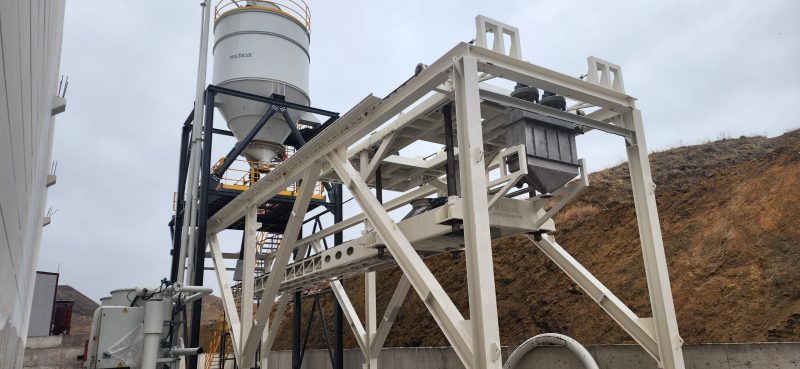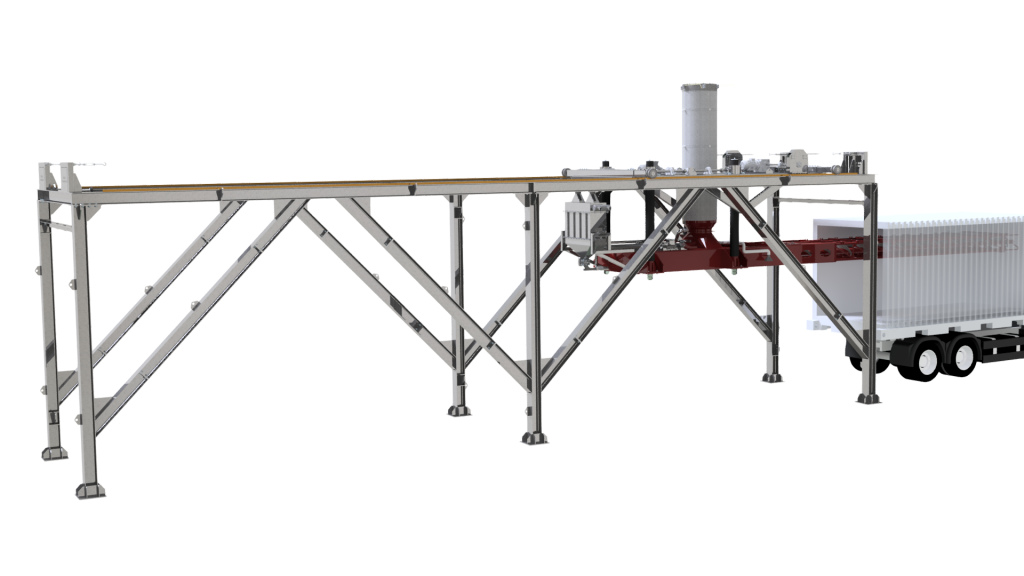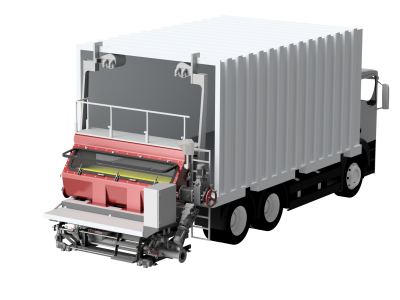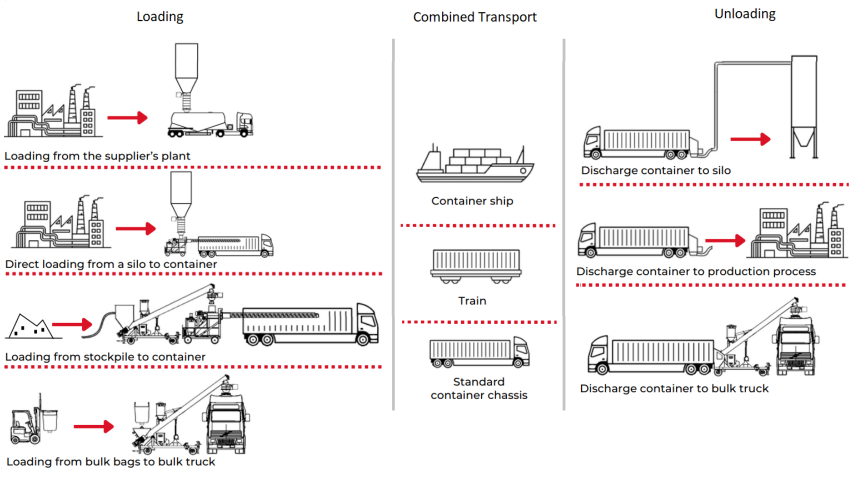Polimak provides all-round solutions to help bulk producers in logistics and warehouse management, covering the three main steps of the process: loading, main carriage, and unloading.

Different components may be used in each application to meet requirements however screw feeders, pump and motor group, rotary feeders, loading hoppers are some of the key components in filling and unloading systems.


When unloading, the output spout of liner bag is connected to loading hopper of the system. The material fallen down into the hopper are then transffered to the storage medium like silos by pneumatic conveying line. Whole system is able to be controlled by installed control panel.

1. Loading
You can utilize the loading method according to your needs:
- Loading from the plant;
- Direct loading from a silo to a container;
- Loading from a stockpile to a container;
- Loading from bulk bags to a bulk truck.
Our innovative solutions offer a range of loading alternatives tailored to handle even the most challenging bulk materials.
Whether it’s through vacuum technology, conveyors, or specialized equipment, Polimak provides versatile solutions that ensure efficient and reliable bulk solid transfer.
2. Main-Carriage
The product is then transported via container shipping, short-sea shipping, train, or standard container chassis, by choosing the most efficient mode of transport.
Transport your bulk solid material in standard ISO containers.
3. Unloading
After arriving at the final destination, the product is unloaded safely using mechanical, horizontal conveying. According to the customer’s needs, the unloading can be carried out in the following ways:
- Discharging the container directly to a silo;
- Discharging the container to a further production process;
- Discharging the container to a bulk truck.
The Critical Importance of Containerized Transport for Bulk Solids
Transporting bulk solids in containers provides significant advantages in modern logistics.
- Standardized and Flexible Solution: Containers enable smooth intermodal transfers between different transportation modes, such as ships, trains, and trucks, ensuring a seamless and efficient flow throughout the supply chain.
- Improved Product Protection: Containers help reduce the risk of contamination and material loss, ensuring the safe transport of bulk solids.
- Minimized Handling: By reducing handling, containers speed up loading and unloading processes, leading to lower costs and increased productivity.
As a result, containers prove to be a smart choice for industries seeking cost-effective, safe, and well-organized transportation of bulk solids.